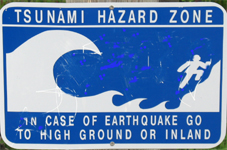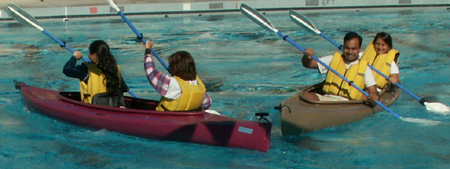Health 57E (HLTH 57E) Cardiopulmonary Resuscitation and Automated External Defibrillation for Professional Rescuers and Health Care Providers, is not currently offered at De Anza. I am leaving the previous homework links and link to the free textbook for past students to access.
Students told me that they had much easier success in CPR when they took the first aid class, HLTH57A before they took CPR/AED, even if they did not need a Red Cross first aid certification.
= = = = = = =
The 1/2 unit class meets for only six sessions, not all quarter.
We finish before finals week and do not meet during finals week.
The class is designed for the success of students who have never had any CPR instruction before, as well as those who have current certifications they need to renew. You don’t have to be a professional rescuer to take this class.
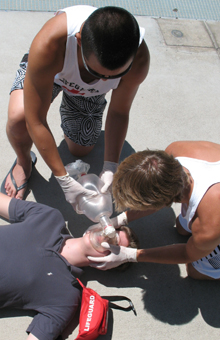
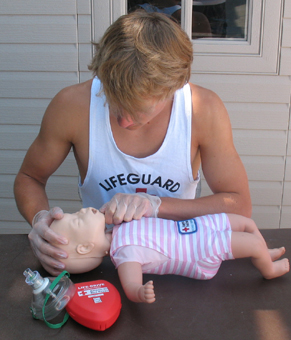
Here is the course description:
Designed for certification in American Red Cross Cardiopulmonary Resuscitation (CPR) and Automated External Defibrillation (AED) for Professional Rescuers and Health Care Providers.
Students will gain the knowledge and skills necessary to apply the Bloodborne Pathogens regulations issued by the Occupational Health and Safety Administration with the intent to prevent disease transmission, recognize and
provide basic care for breathing emergencies, perform Adult, Child and Infant Cardiopulmonary Resuscitation (CPR) and use an Automated External Defibrillator (AED) for victims of sudden cardiac arrest.
Upon successful completion of this course, each participant will receive an American Red Cross certification in Cardiopulmonary Resuscitation and Automated External Defibrillation for the Professional Rescuer and Health Care Provider.
Your CPR/AED Pro certification card will be good for two years. (First aid cards earned in HLTH 57A are also valid for two years.)
What do students think of the instructor? Go to: Health 57 A and C student evaluations and HLTH 57E student evaluations
At the local Red Cross this class would cost you $110 (2016). At De Anza, if you are already a student and therefor already paying general fees, it will cost you $15.50 for the class, $27 for the card fee, and about $22 for the textbook/pocket masks. (Or the text is free with the download described below.)
Enrollment and registration steps are at: http://www.deanza.fhda.edu/admissions/
TEXTBOOK
DO NOT buy the 2002 or 2006 textbook (American Red Cross CPR/AED for the Professional Rescuer) shown below on the left. You need the Cardiopulmonary Resuscitation and Automated External Defibrillation for
Professional Rescuers and Health Care Providers handbook shown on the right:


The De Anza bookstore will probably charge $6.95 for it.
If the bookstore is out of the text, do not special order it as it can take well over a week to get, go to the Red Cross at 2731 North First Street, San Jose or another bookstore that has it in stock.
If you can get the book before the class starts and read it, (it is only 41 pages), or at least read the first chapter, the first class session lecture will make more sense.
You can download a PDF version to your laptop for free, or print the booklet at: http://www.instructorscorner.org/landing/cpraed_handbook/ If you decide to do this instead of buying the hardcopy textbook, you need to at least print the Skills Sheets pages (22 – 41) on paper copies, since we will be doing work on the floor with manikins and laptops will be in the way and not be as easy to see/use as the hardcopy textbook or paper copies will be.
You must have in class each day (except the first day, but it is recommended for that day) either the hardcopy textbook or a fully functional copy on a laptop, and those printed pages.
 You need to buy two pocket masks (also known as resuscitation masks) for use in this class, one in an adult size and one pediatric. It’s the device shown below for ventilations (rescue breathing) with a one-way valve so your breaths go into the victim, but their escaping breath doesn’t give you germs. You do not need them the first day of class. The college bookstore will have these, but they might not be on a shelf next to the textbook. The De Anza bookstore will probably charge $14.99 for the set of the two of them.
You need to buy two pocket masks (also known as resuscitation masks) for use in this class, one in an adult size and one pediatric. It’s the device shown below for ventilations (rescue breathing) with a one-way valve so your breaths go into the victim, but their escaping breath doesn’t give you germs. You do not need them the first day of class. The college bookstore will have these, but they might not be on a shelf next to the textbook. The De Anza bookstore will probably charge $14.99 for the set of the two of them.
![]()
———————————————————-
 An automated external defibrillator (AED) is a machine that analyzes the heart’s rhythm and, if necessary, tells you to deliver a shock to a victim of sudden cardiac arrest. The machine determines how much shock to deliver and talks you through the steps. It won’t shock someone who doesn’t need it.
An automated external defibrillator (AED) is a machine that analyzes the heart’s rhythm and, if necessary, tells you to deliver a shock to a victim of sudden cardiac arrest. The machine determines how much shock to deliver and talks you through the steps. It won’t shock someone who doesn’t need it.
We learn to use the same brand/model of AED as De Anza has at four locations on campus, but the training also applies to all other models/brands.
Do AEDs work?
A. 3 to 4%
B. 64%
C. 75%
Match the percentages above to these:
- the percentage of time CPR works in television dramas
- the percentage of time CPR alone without the use of an AED works
- the percentage of time a typical AED system, such as the ones installed in Chicago’s O’Hare Airport, is successful
the answer is at: Do AEDs work?
_________________________________________________
There is advice at: students tell how to pass HLTH 57E .
If you have had CPR training before you might want to read Why did they change CPR?
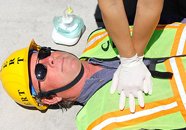
_________________________________________________
The skills/lectures will be taught in this order:
first class session: being a professional rescuer, legal issues, body substance isolation precautions, possibly part of the second class session skills
probably the second class session: using a pocket mask, performing an initial assessment, ventilations (rescue breathing), using a bag valve mask, possibly more
probably the third class session: conscious choking, unconscious choking, maybe CPR
probably the fourth class session: CPR, two rescuer CPR, AED, probably the start of the final skills scenario testing.
probably the fifth class session: start on / finish the final skills scenarios. There will be lines to get into to have your skills checked off. We have limited time for a limited number of tries at skills checkoffs. We do not allow extra time outside of class for skills checkoffs, so you must practice outside of class, plan your time, limit in-class practicing and get into lines as needed. We will have a system in place to allow everyone a minimum number of tries at skills testing. Midway through the class, people who have passed the most skills will have priority for skills testing and those who are too far behind to be able to complete skills testing will not.
The sixth class session: the Red Cross exam.
Students who pass all the skills and skills scenarios will take the written test and we must allow time to finish it, and give those who need it a second try, by the end of this last class session. If you fail the first try you will take a different second test. It is advised that after you finish the first try, you open up your text and look for answers to questions you were not sure about when you took the first exam, but do not talk to each other about the exam. You can’t use your book or notes during either try at the exams.
_________________________________________________
HOMEWORK:
——————————————-
Note that I say briefly write up for a number of your homework assignments; these assignments do not require paragraphs and paragraphs of verbose prose. And please note that I do not accept emailed homework.
The easiest way to do the brief-write-up type of assignment is to run your mouse across some of the text, copy it (click Ctrl C or Apple C on many computers) and paste it (click Ctrl V or Apple V) to a blank document on your computer. You can handwrite any assignment but it must be easily readable, so block printing is preferred and must be in letters at least as big as the type on this page.
If you use a printer, or write with a pen, use black or dark blue ink.
Homework due the second class session:
1) At the second class session bring a sturdy gallon-sized zippered plastic bag (not a sandwich size) to store your adult and infant manikin faces, gloves and name tag in. The zip lock types without a zipper are not meant to be sealed and resealed multiple times and will not work well (they can come open and your faces can come out and get dirty). Each manikin face has a number or number/letter combination on it. Print your name and the numbers of the faces you are issued clearly on the zip-lock bag. DO NOT bring the manikin faces home. If you choose to leave your pocket masks at school with your manikin faces, De Anza and your instructor will not be responsible for replacing them if they are lost. If you bring your pocket masks home to practice with, be sure to bring them back to class each day.
2) Read the course syllabus HLTH 57E course syllabus. It has the grading standards, requirements for certification, class rules and more. You are responsible for the material in this document. (This is also known as the ‘greensheet’ in many De Anza classes.)
3) Read the Simple secondary survey study sheet down to the section on the names of arteries.
(Students in HLTH57E should be familiar with the material at Simple secondary survey study sheet down to the section on the names of arteries. Notice that I said familiar with, you do not have to memorize everything.)
4) If you downloaded the free version of the text, instead of buying the hardcopy textbook, you need to print at least the Skills Sheets pages (22 – 41) on paper copies, since we will be doing work on the floor with manikins and laptops will be in the way and not be as easy to see/use as the hardcopy textbook or paper copies will be.
5) Make these additions to your textbook: write in your CPR textbook If you do not own a hard copy, read the webpage, make a copy of it and keep it with your class notes. AND write the additions on the skills sheets pages you copied. (See #4 above.)
6) Read CPR manikin use and briefly write up three new things you learned. Please write the title of each assignment on each page you turn in. The title of this could be: CPR manikin use
7) Read the handbook (your textbook, it is only 41 pages), then reread at least the skills sheets, pages 21 to 41 and complete these questions written by the Red Cross (see questions 1 – 16 below).
– – – You really will learn more if you read the text first and then answer the questions rather than looking for the answers as you read. You will also be more likely to pass the Red Cross multiple choice exam for certification. – – –
Please note that some of the questions only require a one word answer, and none need long answers.
Answers to questions must be in your own words, but since you will be quoting from the book for most of these questions, put quotation marks around the parts you quote. To get credit for the answers you must say what page in the text you found the answer. (Some questions have more than one page where the answer can be found, you need only list the page you found the answer on.)
Example: If one of the questions were: What is the first step in any emergency (after you have recognized that there is or might be an emergency)?
Your answer could be:
page 5 “in any emergency: size up the scene”
OR
page 22 “size up the scene for safety and then:”
OR
page 27 “size up the scene for safety, then perform a primary assessment.”
1. What are some signs and symptoms that would make you think someone is suffering from respiratory distress rather than respiratory arrest? List at least six.
2. Why is it recommended that two rescuers use a BVM rather than one rescuer?
3. You are on duty at a fundraising carnival and are called to assist a 20-year-old man who is choking on a hot dog. As you approach you see the victim clutching his throat and coughing. After you size up the scene for safety and approach the man, what are the first things you should do?
4. After giving ventilations with a BVM for approximately 2 minutes, you recheck and find s/he is not breathing and does not have a pulse. What should you do?
5. What are some of the signals of a heart attack? (list at least six)
6. In a cardiac emergency, it is vital to call 9-1-1 or the local emergency number
immediately. Name all four links of the Cardiac Chain of Survival.
7. What is the difference between cardiac arrest and a heart attack?
8. Name/describe at least four ways to be sure your chest compressions are effective.
9. If you are doing CPR and giving chest compressions and you notice the victim is breathing, what should you do?
10. What should you do if the chest does not clearly rise when giving the first rescue
breaths?
11. Giving ventilations is a technique for breathing air into a victim to provide the oxygen they need to survive. Once you start giving ventilations, you should continue until: (list all six your text lists).
12. A middle-aged man’s wife called 911 because he was complaining of severe pressure in his chest and pain radiating to his shoulder. The victim is sweating profusely, breathing rapidly and appears very anxious. He says: “I feel like I can’t catch my breath. I still feel the pressure in my chest but it has gotten a little bit better.” What signs and symptoms is the victim exhibiting that would lead you to suspect he is experiencing a heart attack? (List all of them described in the scenario.)
13. In the scenario in question 12, which link(s) in the Cardiac Chain of Survival have been met?
14. What is a CPR cycle for an adult, a child and an infant, with one rescuer?
15. For an adult, a child and an infant, a rescuer compresses the chest to what depth?
16. What do you do if a victim begins to vomit while you are performing CPR?
——————————————-
IF you have the time, taking a look at
Common mistakes in Professional Rescuer CPR skills while looking at the text could help you learn the steps properly. If you don’t have the time this week, reading it will be a homework assignment the third class session.
——————————————-
Homework due the third class session:
1) Re-read the handbook (textbook), then reread at least the skills sheets, pages 22 to 41.
2) Read Common mistakes in Professional Rescuer CPR skills and briefly write up three new things you learned. Please write the title of each assignment on each page you turn in. The title of this could be: Common Mistakes.
——– As you read the skill sheet starting on page 40, you can also read the script of what an AED trainer could say: What the AED says as you use it
3) Complete these questions written by the Red Cross: (Please note that some of these only require a one word answer, and none need long answers.)
17. What are the two most common types of abnormal heart rhythm that can be corrected by defibrillation? (The answer to this is in your textbook if you wrote it in, as in the homework assignment: write in your CPR textbook .)
18. Why is early CPR and defibrillation such an important component in the cardiac Chain of Survival?
19. You are the second rescuer on the scene. EMS personal have been summoned and an AED is available. When should you apply the AED pads?
20. Your text lists eight precautions when using a defibrillator. Which four do you think are most likely to be forgotten?
4) and complete this Red Cross project:
AED—FACT OR FICTION WORKSHEET
1. It is safe to use an AED in rain or snow. Fact or fiction? Tell why or why not.
2. An AED cannot be used on a pregnant woman. Fact or fiction? Tell why or why not.
3. If someone has chest hair, you should shave it before using the AED. Fact or fiction? Tell why or why not.
4. If a person has a body piercing or is wearing jewelry, you should remove the item before using an
AED. Fact or fiction? Tell why or why not.
5. Never shock someone who has an implantable cardioverter-defibrillator (ICD) or pacemaker device.
Fact or fiction? Tell why or why not.
6. Never shock a person on a metal surface. Fact or fiction? Tell why or why not.
____________________________________________________
![]() There is a copy of the Cardiopulmonary Resuscitation and Automated External Defibrillation for Professional Rescuers and Health Care Providers video at the Learning Center that you can watch for review. The library catalog number is RC87.9.C6414 2011. You can check it out and watch it in the Library Express, room LC 123, but you can’t take it home. Go to the campus map at http://www.deanza.fhda.edu/map/main_quad.html. The door to the Library Express, (room LC 123) is on the south side of the Library building, the door faces the ‘grassy area’. Hours it is open are at http://www.deanza.fhda.edu/library/libraryhours.html
There is a copy of the Cardiopulmonary Resuscitation and Automated External Defibrillation for Professional Rescuers and Health Care Providers video at the Learning Center that you can watch for review. The library catalog number is RC87.9.C6414 2011. You can check it out and watch it in the Library Express, room LC 123, but you can’t take it home. Go to the campus map at http://www.deanza.fhda.edu/map/main_quad.html. The door to the Library Express, (room LC 123) is on the south side of the Library building, the door faces the ‘grassy area’. Hours it is open are at http://www.deanza.fhda.edu/library/libraryhours.html
____________________________________________________
Homework due the fourth class session:
1) Reread at least the skills sheets, pages 22 to 41
2) Read How to pass a Red Cross written test and briefly write up three new things you learned. Please write the title of each assignment on each page you turn in. The title of this could be: How to pass a Red Cross test
3) Re-read the Simple secondary survey study sheet down to the section on the names of arteries.
Write up:
– list five times to suspect a spinal injury not listed on page 7 of your text
– two reasons why a person might become unconscious or semi-conscious that you think most people would not know about
– two causes of fainting that you think most people would not know about
____________________________________________________
There are CPR manikins at the library for people to check out and practice on. Ask for them at the front desk, they are in a container on a shelf in the room behind the front desk. You can’t take them home, but you can take them, a friend or two or three, and your textbook and pocketmasks to one of the meeting rooms upstairs and test each other. They are NOT clean, so you should pretend ventilations (rescue breathing), etc.
____________________________________________________
Homework due the fifth class session:
1) Reread at least the skills sheets, pages 22 to 41
2) Take the AED quiz and turn in the answers. Please write the title of each assignment on each page you turn in. The title of this could be: AED Quiz
3) You should always try to do CPR on a firm, flat surface. Read beach drag and write up the three most important things at the page about the differences in giving CPR on a sloping surface if that is all you have. Please write the title of each assignment on each page you turn in. The title of this could be: Beach Drag.
Optional, but recommended: as a review before the skills testing, try to self-test at:
CPR Pro skills review questions
For the sixth class session, as a final review for the exam, re-read your text and read:
Bloodborne Pathogens quick facts
re-read How to pass a Red Cross written test
You will not need a scantron.
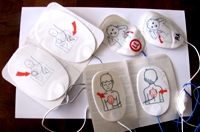
_________________________________________________
OTHER NOTES:
The De Anza library has a lab where you can access computers: http://www.deanza.edu/library/librarywestcomputer.html and a few laptops for loan to students: http://www.deanza.fhda.edu/library/laptop.html
_________________________________________________
The Red Cross offers free refreshers for CPR students that could be a good way to review for the final exam. Copy and paste this URL into your browser:
www.redcrossrefresher.com/q/cpraed-professional-rescuers-and-health-care-provi/choices/
(Please note that the other refreshers at that page are for Lay Responders and the skills are not the same as for Professional Rescuers.)
_________________________________________________
If someone gets hit by lightning, or even nearly hit, they may be thrown a distance, so if they need ventilations (also known as rescue breathing and/or artificial respiration) you’ll need to treat them as a spinal injury and use a modified jaw thrust rather than head-tilt chin-lift. If you are out in the wilderness, away from quick EMS help, you might need to give ventilations for a whole hour or even longer. Don’t give up if they still have a pulse.
Medicine for Mountaineering says:
“Clearly the emergency treatment for a lightning victim consists of immediate, and sometimes prolonged, artificial respiration. (Cardiac resuscitation should be given also, if needed, but the heart most often resumes beating on it’s own.) Over seventy percent of the persons struck by lightning have enough disruption of brain function to lose consciousness. Recovery of enough function to resume breathing commonly takes as long as twenty to thirty minutes, and occasionally takes hours.
If more than one person has been struck by lightning, which commonly occurs, attention should be directed first to the ones who are lying still, not breathing and appear dead. Those who are groaning or rolling around, although unconscious, are breathing and do not require immediate attention.”
You can reassure anyone who might have lost vision or has some paralysis that it is common with a lightning hit, and is usually temporary. Short term memory may be lost for a few days.
see also: Thunderstorm and lightning safety
_________________________________________________
Optional reading for this class:
On page 8 in the section on drowning victims, your text warns: “Do not enter the water unless you are specifically trained to perform in-water rescues.” Anyone can learn to rescue someone in trouble in the water, without entering the water, using equipment commonly found at pools.
How to rescue a drowning victim using a reaching assist or a shepherd’s crook
Generally, the vaccinations you got as a child will protect you the rest of your life, with a few exceptions. An adult recommended vaccinations schedule is at http://www.cdc.gov/vaccines/schedules/index.html
To find out about the Bay Area Critical Incident Stress Management Team go to: http://www.billwilsoncenter.org/services/all/critical.html
read more about critical incident stress at:
https://www.osha.gov/SLTC/emergencypreparedness/guides/critical.html
HIPAA: the Health Insurance Portability and Accountability Act of 1996/2003.
advance care directives has info and a link to where you can get a free one.
The latest on bloodborne pathogens is at: http://www.osha.gov/SLTC/bloodbornepathogens/index.html
https://www.osha.gov/SLTC/ebola/
https://www.cdc.gov/vhf/ebola/index.html
https://www.cdc.gov/vhf/ebola/pdf/ems-checklist-ebola-preparedness.pdf
https://www.cdc.gov/vhf/ebola/hcp/procedures-for-ppe.html
http://www.wakegov.com/ems/medical/Pages/systemtreatmentprotocols.aspx
Blood donation FAQs has reasons some people faint after giving blood and ways to prevent it, a link to the questions asked before you donate, info and links for athletes and scuba divers, precautions to take after donating blood, info on how donating blood can make you healthier, info on what the donations are needed for.
Emergency managers warn us: “YOYO96…You’re on your own for 96 hours. With preparation you can get through it… if you have thought through everything you can be prepared…” A link you can send to friends and family about Do it yourself earthquake preparedness:
 earthquake home hazards survey
earthquake home hazards survey
______________________________________
When you call 911 from a land line telephone, such as in your house, you get dispatch for the city the phone (your house) is located in. When you call 911 from a cell phone often you get the Highway Patrol at a central location. Sometimes, especially if you are not calling about something on the freeway/highway, it would be faster to get dispatch for the specific city the problem is happening in. This requires knowing the direct dial seven digit phone number for each dispatch.
Direct dial emergency phone numbers for most cities in Santa Clara County, California, can be found at the Santa Clara County ARES/RACES (Amateur Radio Emergency Services/Radio Amateur Civil Emergency Services) website.
http://www.scc-ares-races.org/SCCoEmergencyNumbers.pdf
San Mateo County cities (and the San Francisco airport) direct dial phone numbers can be found at:
http://www.blackberryreact.org/smco911phones.html
When you are planning a camping trip, try to get the direct dial number for the park/Sheriff or agency in charge before you go.
In a lot of Canada you can dial 911 in an emergency just like in the U.S. But in other countries it’s often a different number. See this list from the U.S. Department of State and double check when you get there:
https://travel.state.gov/content/dam/students-abroad/pdfs/911_ABROAD.pdf
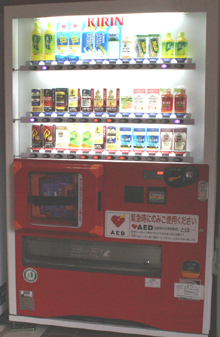

______________________________________
Once I get the certification cards from the Red Cross I will not be responsible for holding on to yours or for getting it to you if you did not get me a self-addressed, stamped envelope by the last class session.
If you forgot to get me an envelope before the end of class you can leave it at the faculty mailboxes. How to get a message to a De Anza instructor has a description of how to find them and a picture of the faculty mailbox drop box.
The cards will be mailed within three weeks after the end of the quarter unless the Red Cross is too busy.
![]()
programs for student success in all kinds of classes, including tutorials, readiness, academic skills, instructional computing and more:
http://www.deanza.edu/studentsuccess/
More students qualify for financial aid than use it or even know they qualify. There are enrollment fee waivers you can apply for online which take about a week to get an answer. For all the details go to:
http://www.deanza.fhda.edu/financialaid/index.html
De Anza College offers many scholarships, some of which have few applicants!
Check out the loot:
http://www.deanza.edu/financialaid/scholarship.html
You don’t have to pay for all your classes/fees at once. De Anza has an installment payment plan that allows you to defer most of your payments. Go to: http://www.deanza.fhda.edu/registration/cashier/deferpay.html
The De Anza College Food Pantry provides food to students in need. You can get a bag of groceries with no forms to fill out. http://www.deanza.edu/students/foodpantry.html
Various local businesses give discounts to De Anza Associated Student Body card holders. A page of discounts (mostly 10% off food) is at http://www.deanza.edu/dasb/discounts/index.html
You can read the curriculum, (course outline or course content, usually designed by a division then reviewed and approved by the college) for any De Anza class at: http://ecms.deanza.edu/deptoutlinespublic.html
The Biological and Health Sciences Division student handbook has lots of useful information. It’s at:
http://bhs.deanza.edu/StudentHandbook.pdf
– – – – – –
The deadline to register to vote for any election is 11:59:59 p.m. Pacific Time on the 15th calendar day before that election. If you will be 18 years old by the election day, but are not yet 18 by that registration deadline, you can still register to vote. If you are homeless you can register to vote. There is no literacy requirement. If there are a multitude of items on the ballot and you only vote on one of them, your vote will still be counted. You can register to vote online, (using a computer, iPad, tablet or smartphone) at http://registertovote.ca.gov
From Rock The Vote: “Millennials have the potential to be the largest voting bloc in our country but are voting at a fraction of their size, with an estimated 30 million young people staying home in 2012.”

If you are in a profession that requires them (nursing, for example) CEUs are available after you complete this course. continuing education credits (units)
_________________________________________________

The Outdoor Club (usually spring break and October) Monterey ocean kayak day trip
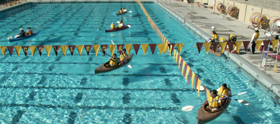
Every quarter the De Anza College Outdoor Club has a kayaking lesson in the De Anza pool on a weekend. Details and a few pictures from previous lessons are posted at:
_________________________________________________
Active shooter RUN / HIDE / DEFEND training is regularly offered at De Anza.
_________________________________________________
On a weekend, February 3-5, 2017 , TWENTY-SEVENTH ANNUAL De Anza College Outdoor Club Yosemite Valley Winter Camping trip.
Usually one of our biggest trips. Rain? Snow? Sleet? Sunshine? Raccoons (quite possibly IN the tents), Coyotes! Campfires! Night hikes, early morning hikes, long hikes to viewpoints above the valley, snowboarding, skiing, Ranger walks, Ranger snowshoe walks, ice skating, snow sculpture building. Many years we have people who have never been camping before and/or have never been in the snow. (So they’ve never been in a snowball fight, either.) Snow Camp
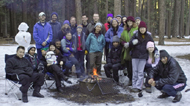
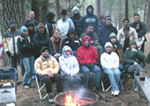
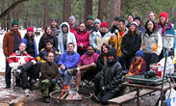
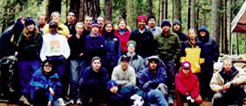 ”
”
heart thumper http://www.youtube.com/watch?v=znIidvdmqso
rescue http://www.youtube.com/watch?v=aIGTyANMFb4
http://www.zoll.com/medical-products/automated-external-defibrillators/aed-plus/step-by-step-demo/
96 minutes http://www.youtube.com/watch?v=wkXZLfd8f2E
http://www.amazon.com/Closer-Learning-Near-Death-Experiences-Children/dp/0804108323
1,2,3,4 I30 5 I38 6,7 I39 8,9 I40 10 S34 11 S12, 12-16 I42
17-19 I55 20 I53 F/F I53-54
